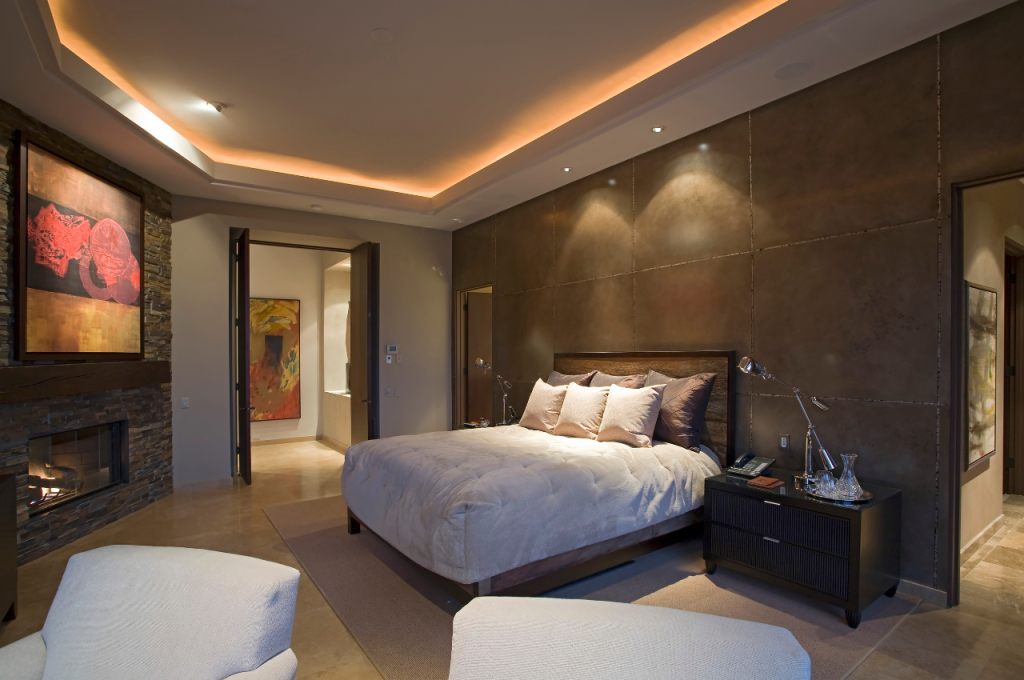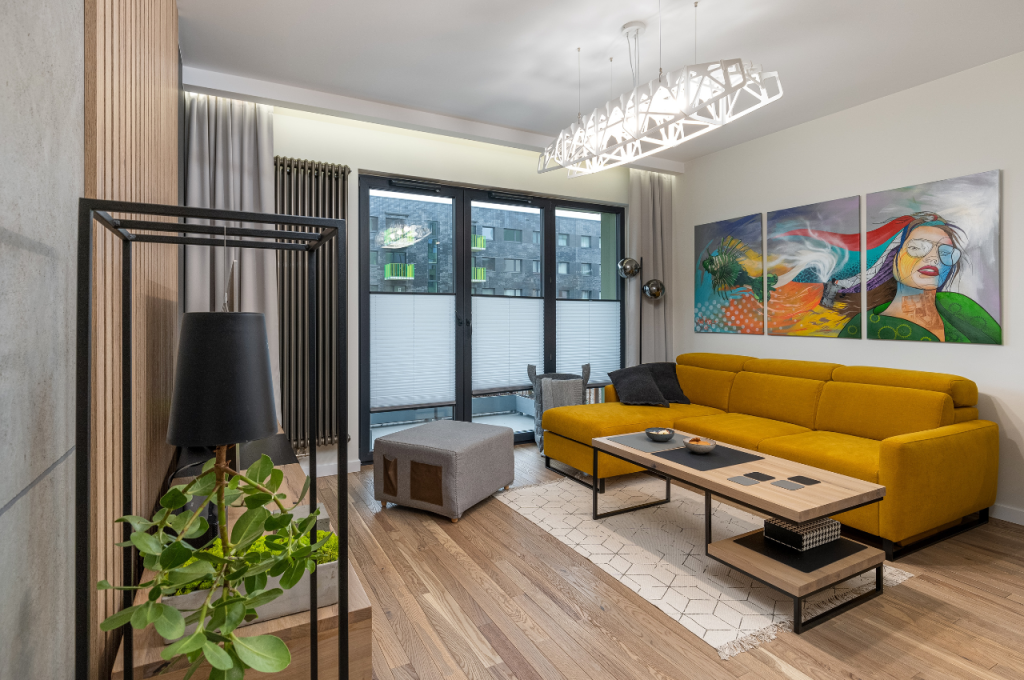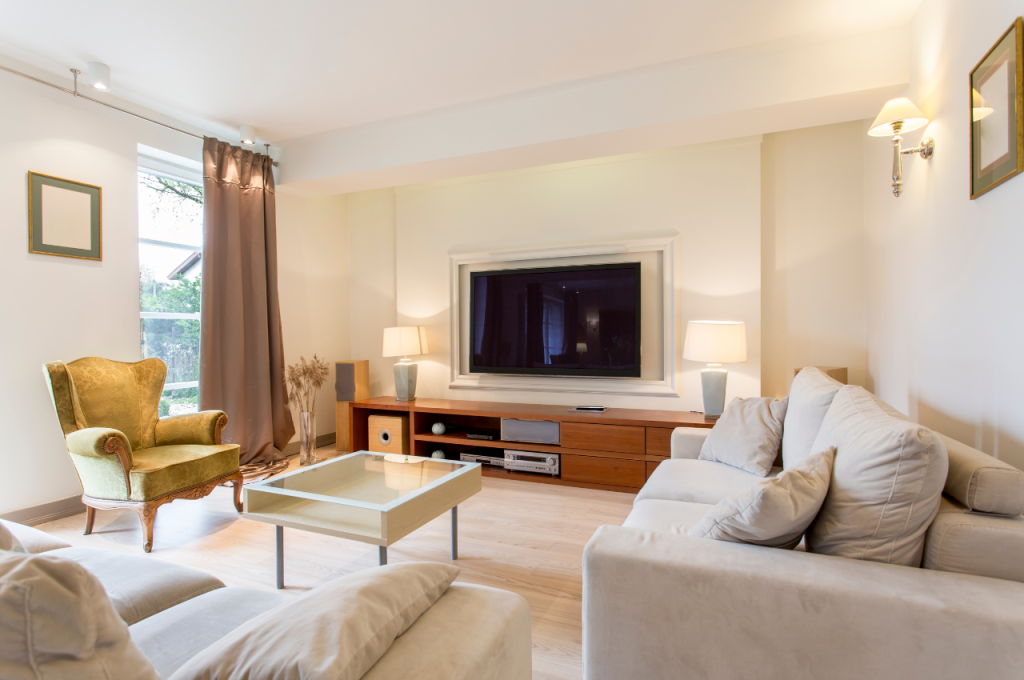Home interior design is the art of enhancing the interiors of a residential space to create a functional and aesthetically pleasing environment. It involves the selection of furniture, color schemes, decorations, and layouts to reflect the personal style and maximize the use of the available space.
Home interior design plays a pivotal role in creating a comfortable and inviting atmosphere that aligns with the homeowner’s lifestyle and preferences. Effectively designed interiors can significantly impact the overall ambiance and functionality of a living space, making it an essential aspect of any home.
By blending practicality with visual appeal, interior design transforms a house into a home that resonates with its occupants.
The Evolution of Home Interior Design
Explore the dynamic journey of home interior design over the years, from its historical roots to modern trends, uncovering the ever-changing blend of style, functionality, and innovation that shapes our living spaces today.

Historical Influences
Throughout history, home interior design has been shaped by various cultures, traditions, and artistic movements.
Modern Trends
In the contemporary era, home interior design is characterized by minimalism, sustainability, and integration of technology.
The Role of A Home Interior Designer
Home interior designers possess a range of essential skills to transform spaces.
- Understanding of colors and aesthetics
- Knowledge of spatial planning
- Attention to detail
Home interior designers work closely with clients to bring visions to life.
- Initial consultation and requirements gathering
- Design proposal and feedback iteration
- Material sourcing and implementation
Key Elements of Home Interior Design
When it comes to home interior design, several key elements play a crucial role in creating a beautiful and functional space. A well-designed interior not only enhances the aesthetic appeal of your home but also improves the overall comfort and functionality.
Color Theory
Color theory is a fundamental aspect of interior design. It involves the study of how colors can influence moods, emotions, and perception. By strategically choosing the right colors, you can create a harmonious and visually pleasing atmosphere in your home.
Here are some important considerations for color selection:
- Choose a primary color for the walls and larger areas of the room.
- Use complementary colors to create contrast and visual interest.
- Consider the psychological effects of colors, such as warm tones for a cozy feel or cool tones for a calming effect.
Furniture and Accessories
Furniture and accessories are essential elements that contribute to the overall look and feel of your home. They not only provide functionality but also add character and style to your interior design.
Here are some tips for selecting furniture and accessories:
- Choose furniture that suits the purpose of the room and its size.
- Consider the overall style and theme of your home when selecting furniture pieces.
- Accessorize with items that reflect your taste and enhance the ambiance of the space.
- Ensure proper placement and arrangement of furniture to promote an efficient flow and maximize space.
Lighting Techniques
The right lighting can transform the atmosphere of a room and accentuate its design elements. It plays a crucial role in creating ambiance, highlighting focal points, and providing functional illumination.
Here are some lighting techniques to consider:
- Use a combination of ambient, task, and accent lighting to create layers of illumination.
- Consider natural light sources and incorporate them into your design.
- Choose appropriate lighting fixtures that match the style of the room.
- Utilize dimmers to adjust the intensity of light for different occasions and moods.
Creating Functional and Aesthetic Spaces
Creating functional and aesthetic spaces is an intricate dance between practicality and beauty within interior design. This entails meticulously planning every detail to ensure that each element not only serves a purpose but also contributes to the overall visual appeal of a room. From the layout of furniture to the selection of colors and materials, each decision is vital in shaping both the functionality and ambiance of a space.
Optimizing Layouts
One crucial aspect of home interior design is optimizing layouts. When designing a space, it’s important to consider how it will be used daily. By carefully planning the placement of furniture and objects, you can ensure that the flow of the room is functional and convenient.
Moreover, this optimization helps to make the most out of the available space, especially when it comes to smaller rooms. By strategically arranging furniture, you can create an illusion of more space and make the room feel larger and less cluttered.
Incorporating Personal Style
Another key aspect of home interior design is incorporating personal style. Your home should be a reflection of your personality and taste, so it’s important to infuse it with elements that resonate with you.
Consider the colors, patterns, and textures that you are drawn to and incorporate them into the design. Whether you prefer a minimalist, modern look or a cozy, eclectic style, the key is to create a space that feels like you.
Additionally, personalizing the space with artwork, photographs, and sentimental objects adds a unique touch and makes it truly yours.
Budgeting for Home Interior Design Projects
When it comes to home interior design projects, budgeting is a critical aspect that requires careful consideration. Proper budgeting ensures that your project stays on track and meets your expectations without causing financial strain. To achieve your desired design while staying within budget, it’s important to understand the cost factors involved and prioritize expenses effectively.

Cost Factors to Consider
Several factors contribute to the overall cost of home interior design projects. When budgeting for your project, it’s essential to consider the following cost factors:
- Materials and Finishes
- Furniture and Decor
- Labor and Installation
- Consultation and Design Fees
- Unexpected Expenses
Prioritizing Expenses
Prioritizing your expenses is crucial in ensuring that the most essential aspects of your interior design project are allocated the appropriate funds. By prioritizing expenses, you can focus on the elements that will have the greatest impact on your space while managing your budget effectively.
Innovations in Home Interior Design
Home interior design is constantly evolving, with designers and homeowners alike constantly searching for new and innovative ways to enhance the aesthetics and functionality of living spaces. From smart home technology to sustainable design practices, these innovations are revolutionizing the way we think about and experience our homes.
Smart Home Technology
Smart home technology has gained immense popularity in recent years, allowing homeowners to control various aspects of their homes with just a few taps on their smartphones or voice commands. From lighting and temperature control to security systems and entertainment, this technological advancement has made homes more convenient, energy-efficient, and high-tech.
With smart home technology, you can set timers for your lights to turn on and off, adjust the temperature remotely, and even monitor your home security cameras from anywhere in the world. This not only adds a layer of convenience but also enhances the safety and energy efficiency of your home.
Imagine being able to control your home’s music and lighting with a simple voice command or stepping into a perfectly cooled or heated space after a long day at work. Smart home technology brings this level of convenience and comfort to homeowners, making everyday tasks more seamless and enjoyable.
Sustainable Design Practices
In today’s environmentally conscious world, sustainable design practices have become a crucial aspect of home interior design. People are becoming increasingly aware of the impact their homes have on the planet, and as a result, designers are incorporating sustainable materials and practices into their projects.
Sustainable design focuses on using eco-friendly materials, reducing energy consumption, and minimizing waste. This approach includes choosing renewable materials, such as bamboo or reclaimed wood for furniture and flooring, as well as energy-efficient appliances and fixtures.
Additionally, sustainable design embraces natural lighting and ventilation, reducing the reliance on artificial lighting and air conditioning. This not only reduces energy consumption but also creates a healthier and more comfortable living environment.
| Benefits | Description |
| Environmental Conservation | Reduces carbon footprint and minimizes waste. |
| Cost Savings | Energy-efficient appliances and materials save money in the long run. |
| Improved Indoor Air Quality | Enhances overall health and well-being. |
By implementing sustainable design practices, homeowners can not only contribute to a greener planet but also create a space that promotes health, well-being, and cost savings. It’s a win-win for both the environment and the individuals living in the home.
Popular Home Interior Design Styles
Home interior design styles play a significant role in shaping the ambiance and functionality of a living space. From minimalist to Scandinavian to industrial, each style brings its unique characteristics, allowing homeowners to express their tastes and preferences. Let’s explore these popular home interior design styles in more detail.
Minimalist
Minimalist interior design embraces simplicity, clean lines, and a clutter-free look. It focuses on creating a serene and spacious environment with neutral colors and functional furniture. Key elements of minimalist style include open spaces, uncluttered surfaces, and an emphasis on natural light.
Scandinavian
Scandinavian design is characterized by its simplicity, functionality, and a nod to the natural world. It features light, muted colors, natural materials, and an uncluttered appearance. Scandinavian interiors aim to create a cozy and inviting atmosphere through the use of wooden accents and simple yet elegant furniture forms.
Industrial
Industrial design draws inspiration from urban lofts and warehouses, incorporating raw materials and unfinished elements. Exposed brick, weathered wood, and metal accents are common in industrial interiors. It exudes a rugged aesthetic and often integrates salvaged items and utilitarian objects into the decor.
Emotional Impact of Home Interior Design
Home interior design is more than just arranging furniture and selecting colors; it has the power to evoke emotions and create a sense of well-being. The way we design our homes has a significant impact on our emotional state. This blog post will explore the emotional impact of home interior design, with a focus on two key aspects: creating ambiance and promoting well-being.
Creating Ambiance
Creating ambiance is an essential part of home interior design. The ambiance refers to the atmosphere or mood that is evoked in a space. It is the feeling you get when you step into a room, whether it’s cozy and inviting or cold and unwelcoming. A well-designed interior can create the perfect ambiance to match the purpose of a room.
One way to create ambiance is through lighting. Natural light can make a space feel bright and airy, while warm, dim lighting can create a cozy and intimate atmosphere. Additionally, the strategic placement of decorative lighting fixtures can add a touch of elegance and style.
Another element that contributes to ambiance is the choice of colors and textures. Colors have a profound impact on our emotions and can create different moods. For example, warm colors like red and orange can evoke feelings of energy and passion, while cool colors like blue and green can induce a sense of calm and relaxation. Similarly, the selection of textures, such as soft fabrics or rough wood, can create a tactile experience that enhances the overall ambiance.
Promoting Well-being
Home interior design plays a crucial role in promoting well-being. A well-designed home can provide a sanctuary where one can relax, rejuvenate, and feel at peace. It is essential to consider the needs of the occupants and design a space that supports their physical and mental well-being.

One aspect to consider is the organization and functionality of the space. Clutter can create a feeling of chaos and stress, while an organized and clutter-free environment can promote a sense of calm and clarity. Ample storage solutions can help maintain a clean and organized space.
The use of natural elements also has a positive impact on well-being. Incorporating plants and greenery into the design can create a connection with nature, which has been shown to reduce stress and improve overall mood. Additionally, natural materials like wood and stone can bring a sense of warmth and tranquility to a space.
Conclusion
Home interior design plays a crucial role in creating a space that reflects your personality and meets your lifestyle needs. By using color, furniture, and decor, you can transform any space into a comfortable and stylish environment.
With the right knowledge and inspiration, you can achieve a truly beautiful and functional home.

